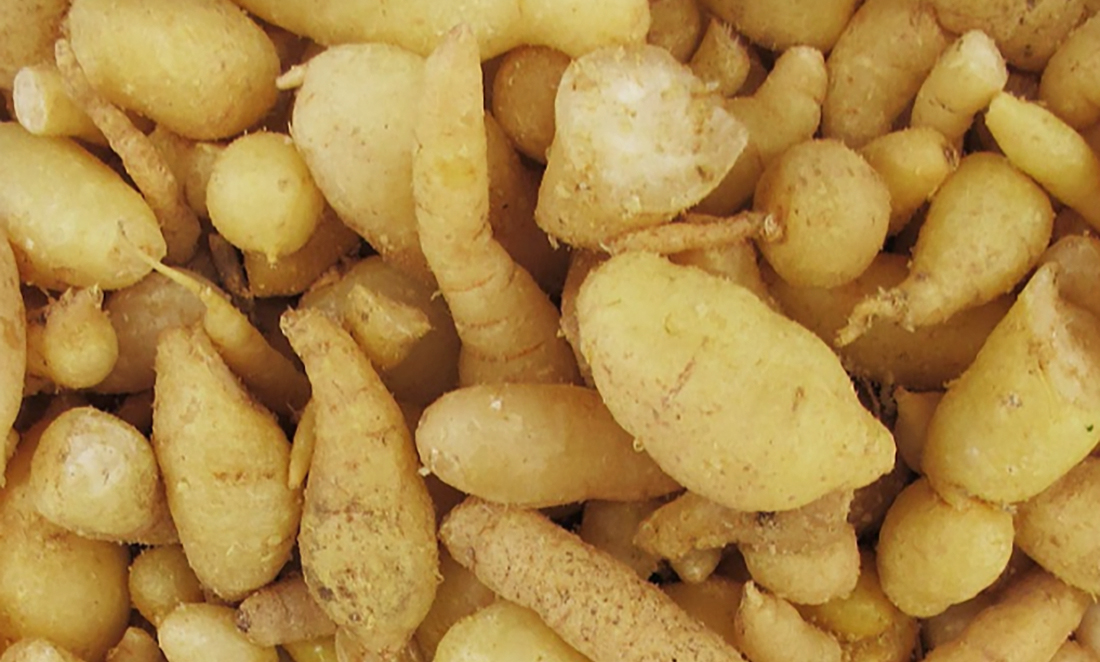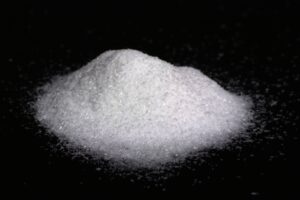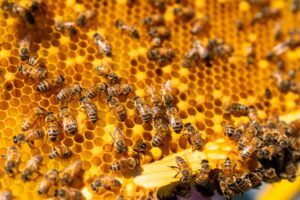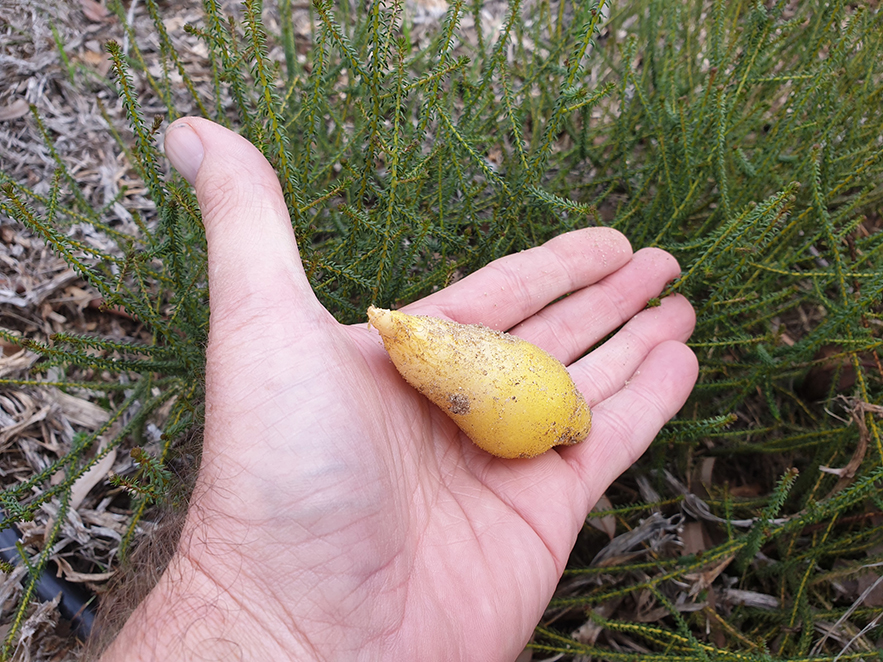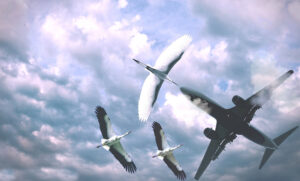Some people say it tastes like a cross between a carrot and a parsnip. Others liken it to a radish or even a pear.
But everybody agrees – it’s delicious.
We’re talking about the youlk, a native root vegetable that grows wild on WA’s south coast and is a common feature of Aboriginal cuisine.
An Aboriginal life skill
UWA adjunct researcher and Noongar Elder Lynette Knapp was taught to harvest youlks by her father.
“You can do it all summer long,” she says.
“As long as you cover back in what you don’t use because we normally leave a little bit in the ground.
“They just send out runners and regrow.”
Lynette – or ‘Auntie Lyn’ as her colleagues call her – says youlks swell up in summer, making them a valuable water source.
That makes finding youlks an important Aboriginal life skill.
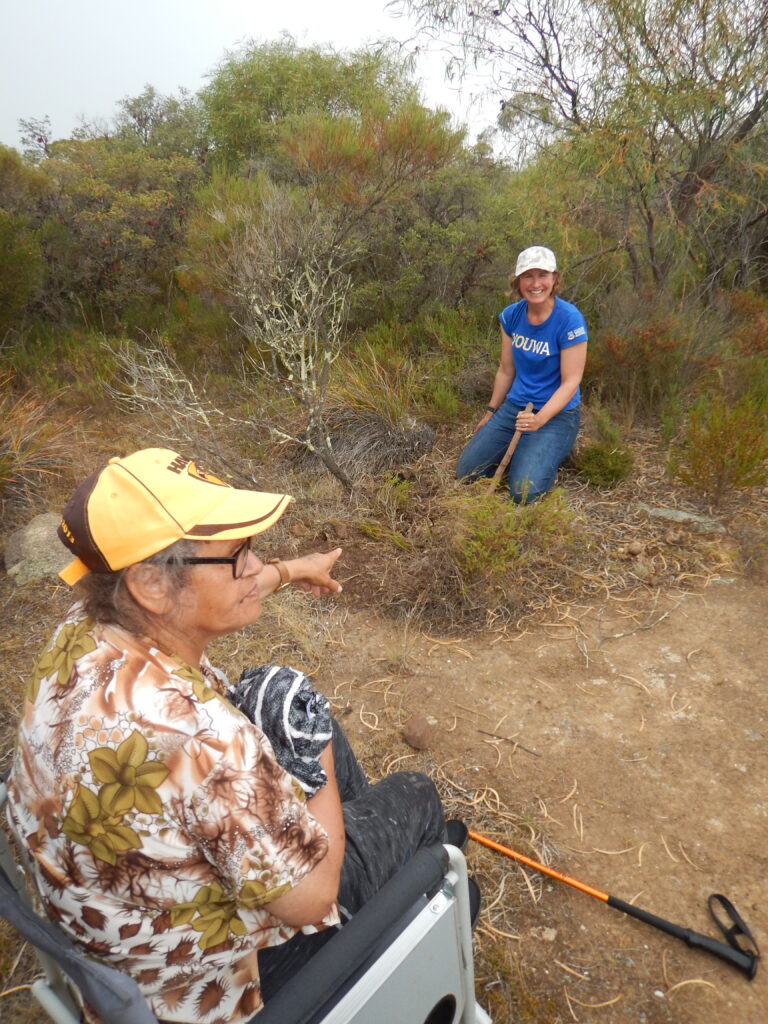
“It’s a thing that all Aboriginal people have been taught for many, many thousands of years,” Lynette says.
Finding youlks in the bush
Lynette recently collaborated with UWA conservation biologist Dr Alison Lullfitz on research into how youlk plants respond when they’re harvested.
Alison says youlks are very well known to Noongar people, particularly around the south coast.
She says the plant mainly grows around the Jerramungup and Ravensthorpe areas.
“It’s a small shrub, really quite nondescript,” Alison says. “It doesn’t stand out at all in the bush.”
The tubers themselves are about the size of a small potato.
Alison says the easiest way to spot youlk plants is to look for its flowers between March and May, which are similar to those on coriander or parsley plants.
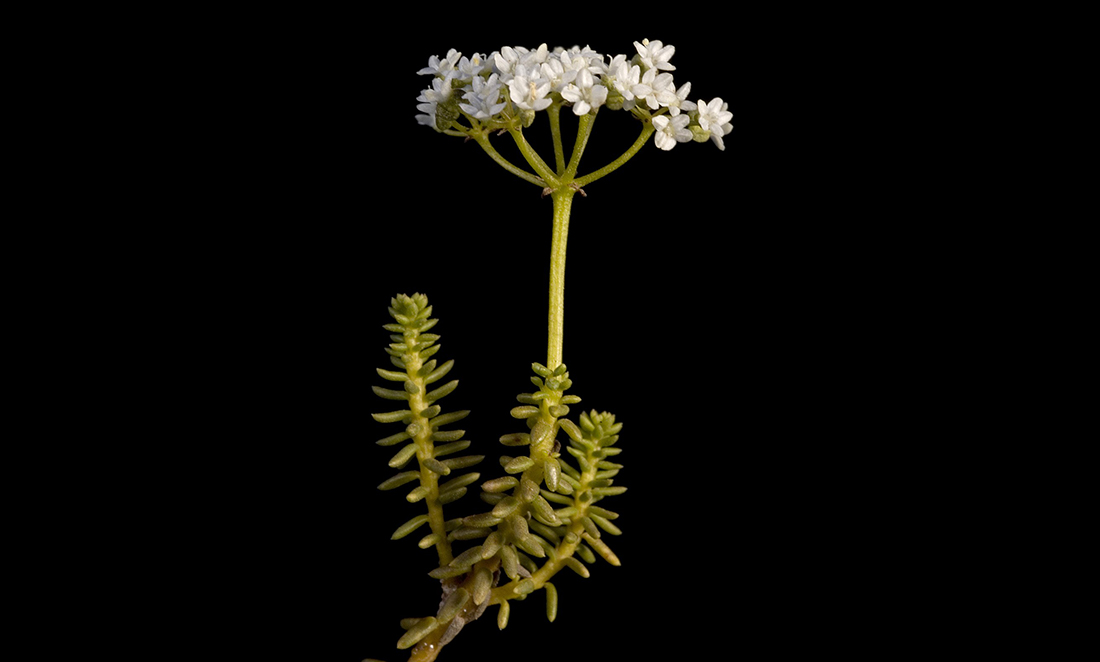
Youlks also have a distinctive herby smell, she says.
Ancient knowledge
Youlk plants live on after they’re harvested, much like a sweet potato.
You can remove the offshoot tubers, leaving the main plant to continue growing.
In their research, Alison and Lynette found that harvesting youlks appears to have a renewing effect on the tubers.
One year after the tubers were collected, youlk plants in the study had just as many stems as they did pre-harvest.
However, after 2 years, the size and weight of the tubers was still less than before they were harvested.
“That actually corresponded well with what Noongar Elders were telling us,” Alison says.
“And that was that, usually, they would probably have more of a 4-year rotation of harvest of individual plots.”
Alison says there were big variations in the yields from different sites. She heard from Noongar Elders that their families had their favourite plots that they would go back to again and again.
The best bush coleslaw
Alison says youlks are starting to gain traction in restaurants, and there are programs to support Indigenous landowners to grow them commercially.
“To me, I think they’re really tasty,” Alison says.
Lynette says youlks are traditionally eaten raw.
“Cleaned and straight out of the ground … it’s yummy,” she says.
“If we’re up country and if I pass through where we go and get our youlk, I’ll possibly stop and dig a couple up.
“It’s absolutely beautiful. I add it to my coleslaws – makes it like nothing else.”



